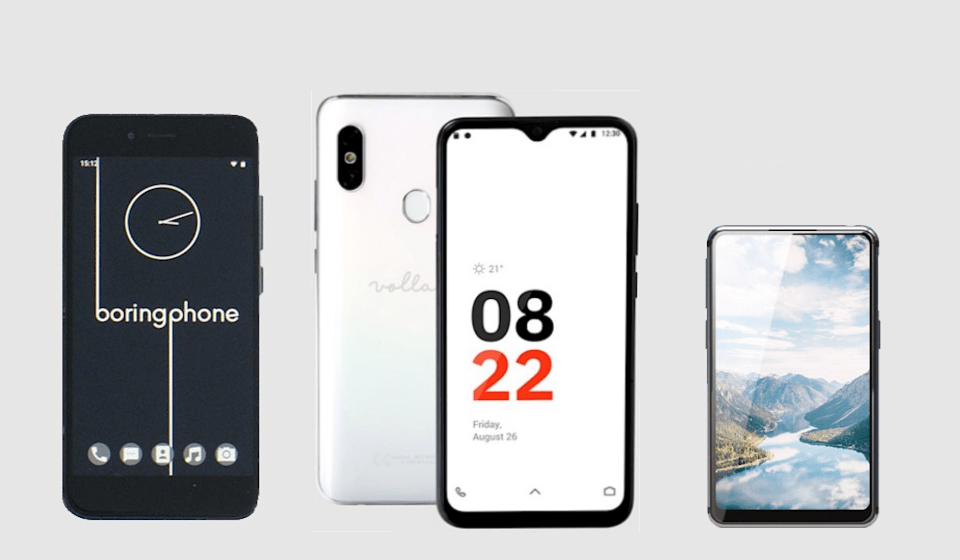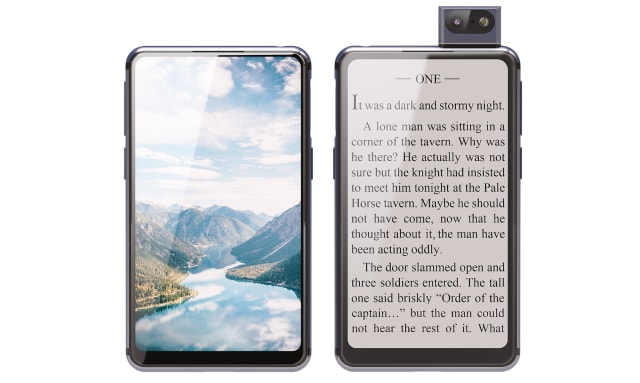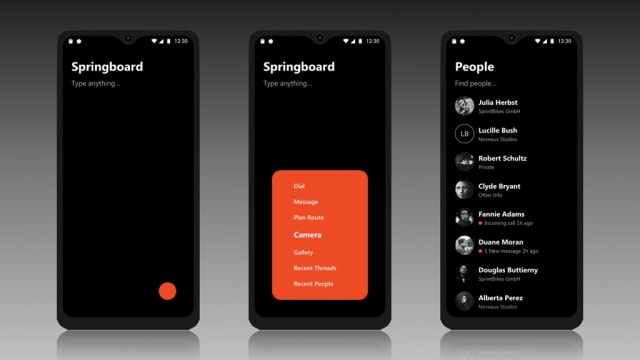
It's not impossible, but it might as well be.
by James TrewEver wondered what the best selling phone of all time was? No, it’s not an iPhone, or a Samsung Galaxy. It’s not even a smartphone. According to Wikipedia, the phone that’s found its way into more palms and back pockets than any other is the humble Nokia 1100. Yep, not even one of the “cool” Nokias. In fact, Nokia's handsets make up eight of the top ten best selling phones of all time. (The iPhone 6 and Samsung E1100 being the other two.).
Of course, right now (and in the US) the most popular handsets most certainly are made by Apple and Samsung. They’re all smartphones, and they have a lot more in common with each other than really any of Nokia’s phones ever did. Phones got boring, samey and very large. Something that in recent years inspired smaller companies to make more niche phones. But when was the last time you saw someone with something like a Nextbit Robin, a Yotaphone or a Fairphone? Despite these alternative companies struggling to find a place to sell their phones (or an audience to buy them) there’s a rising trend of individuals picking up the baton. What if you or I wanted to make a phone? Is it even possible? Maybe, but not without many, many challenges.
One of the people trying to save us from corporate boredom is French product designer Pierre-Louis Boyer. Technically, Boyer doesn’t make phones. Yet. He has, however, released a few products with some modest success. His company 8Bcraft makes retro gaming handhelds which are popular within that scene (I wrote about one of them here). He also started a company that made thermal plastic. Now, he’s setting his sights on the gadget we all use the most, and he’s hoping to convince people that small is cool again.

“Every time I upgraded my phone I was like, ‘Well, this phone is very big. How can I handle it?’ So that's actually one reason why I kept my iPhone 4 for a long time. It's because it was small and it was working so I was going to keep it,” Boyer told Engadget. It’s a sentiment you may have heard before, and one that even pops up at Engadget HQ (some of us are very fond of the original iPhone SE, for example). But take a look at any mobile operator’s phone selection, and the message is clear: Big phones rule, and Android or iOS are likely your only options.
The phone that Boyer plans to make -- working title: OneDevice -- isn’t just a small smartphone. Though at about 4-inches tall, it is also that. In fact, it’s the same height as his beloved iPhone 4, just a little wider. During our interview, he held up his old Apple handset, with a pencil taped to the side, to illustrate the dimensions of the phone he envisions. The OneDevice would come in two models, one of which would sport a Yotaphone-like e-ink display on the back. The main display would be 4.7-inches across -- incidentally the same as this year’s, taller, iPhone SE -- but with a 16:9 aspect ratio, which Boyer points out is optimized for video viewing.
Then there’s Alex Davidson, whose “Boring phone” is an (ironically) interesting take on the smartphone. Unlike other anti-distraction devices that just offer the basics (usually no browser or social media), the Boring phone is a legit smartphone (a modified Xiaomi A1), just with a limited operating system. Or, there’s the security and privacy-focused Volla phone from a German company of the same name. Volla (not to be confused with Jolla) is similar to Boring phone in that it uses a customized handset from an existing manufacturer -- Germany’s Gigaset -- but totally changes the experience with bespoke software. Both Boring phone and Volla had successful crowdfunding campaigns, with Boring already shipping, while Volla is on track to be in backers’ hands this fall.
Davidson says his Boring phone has two main audiences: People who want fewer distractions, and parents that want a capable, yet internet-free phone for their kids. As he tells it, having a “dumb” phone is social suicide for many tweens and teens these days, so a somewhat capable handset, just with a stripped back operating system, could keep parents and overwhelmed professionals happy.
While the Boring phone’s Kickstarter goal was modest -- it only needed around 75 backers to hit its target -- Davidson is confident more people are looking for something like this. “It's a little bit of a strange one for people to get,” he explained, “but once people get it, and they sort of say, ‘Yeah, right. So I have all the useful things and I just don't have an option to have anything that's going to waste my time.’”
Volla is the brainchild of Dr. Jörg Wurzer. His vision was to make a phone that balances privacy with a smart, yet simple, operating system. Like the Boring phone, it too is based on a heavily modified version of Android at its core, but has no Google services and a completely rethought user interface (it will run most Android apps if you want). “I realized that it's almost impossible to decide on my own with whom I share which data if I use stock Android or iOS.” Wurzer told Engadget.
Taking an existing phone and modifying the experience is an obvious route. Making your own handset is fraught with challenges. For one, you need access to reference designs from the chip makers. And according to Boyer, getting those from the market leaders is nigh on impossible as an independent. Plus it’s costly. “For example, the hardware development and software development is around, between 500,000 and one million Euro” said Boyer. Even tweaking an existing design requires deep pockets. “The minimum order for a phone, for getting one made where they change the chipset at the factory for you, is about 3,000. Which is like $100 a phone for a base model, that's $300,000 upfront” according to Davidson.
This is even before you consider selling the phone in the US. Boyer is in France, speaking with local operators there. Davidson is in New Zealand, and Wurzer is from Germany. None of them mentioned any plans to sell their phone in America, and there’s likely a good reason why. “We are focused on Europe because FCC certification costs about $150,000 and this is, for a startup, challenging,” Wurzer explained.
Then, of course, you need somewhere for people to buy it. Mobile operators have close relationships with the big companies and a limited amount of “shelf space” in terms of the number of phones they can offer and support at any one given time. “I think we will start with online sales channels, then with other commonly known sales channels in Germany: Supermarkets, electric markets and in the end, the operators,” Wurzer said. Davidson points out that just getting visibility on crowdfunding platforms can be difficult. “We were a little bit disappointed that the algorithms within Kickstarter [...] I guess that they just use an algorithm and whatever is getting the clicks is what gets to the top of the list.” Kickstarter, for its part, explains how its “Magic” filter works here in this blog post.
Boyer is exploring crowdfunding as well as traditional investment routes. He’s been speaking with Xavier Niel, a French investor who founded Free, one of the country’s largest carriers. It was Niel who told him that about 15 percent of customers expressed an interest in a smaller phone. But Neil drives a hard bargain and told Boyer that for his phone to be considered for Free’s network, it would need to sell for around €200 ($220), which is a very low price for a new company to meet. And it’s not just how marketable your phone is. “There's all of the stuff with the cellular networks between countries, and how they're all just different enough to make that difficult,” Davidson added.
Having a large network offer your phone to its customers is likely the holy grail for an independent, and while it’s not easy, it’s also not impossible. “We need to be confident that there will be customer demand for a particular product and that it, therefore, makes commercial sense for us, but the customer is at the heart of our decision making.“ Magnus McDonald, Director of Product and Category Management at O2 (UK) told Engadget. He admits some brands (Apple and Samsung) make up most of what customers want, but indies aren’t off the table. “We would absolutely consider smaller companies making interesting phones” he added. “I’d encourage any new and emerging brands to contact my Hardware Category Management team on LinkedIn, providing some detail on the product, the marketing strategy, and investment that will enable them to achieve cut-through in the UK handset market.”
The sad truth is, some of the most interesting phones from the last few years have struggled to gain any traction. Whether that’s the curious Yotaphone, Razer’s gaming phone or even the promising (and relatively thoroughbred) Essential phone. It seems we’re losing our appetite for (or access to) anything outside of the norm. Of course, that’s with regard to the Western market. Chinese manufacturers aren’t afraid to try out new and bold ideas, but often in a way that doesn’t resonate with US buyers either.
It turns out, Chinese manufacturers pose something of a challenge for independent phone-makers, too. When I checked Kickstarter for recent projects, quite a few come up, but it’s not long before you realize that many (if not most) of them are either the same kinds of phone you might find on Wish, likely made by an ODM in Shenzhen or similar. “You only have to look at a few Kickstarters, and you'll quite quickly start to realize what's really homegrown and what's kind of pretending to be homegrown,” Davidson said.

For Wurzer and Volla, using a local manufacturer had other benefits. “With Gigaset, because they are able to produce highly customized, small batches through the way they're produced. It's not manufactured by people in Asia, it's a highly automated way to produce them with robots and people and because of that, it's possible to produce high quality and low price and high customization” He said. “And what you can't underestimate is the legal and the business security you have, if you have a vendor in the same country that is 90 car minutes away.”
What all three of these projects have in common is the desire to solve a problem. “I'm not trying to push a vision, what I'm trying to do is to solve a pain point which is, you have a lot of people, which is 15 percent of the population, which want a small smartphone and there isn't any smartphone available for them,” Boyer said. For Davidson, it’s productivity: “I just found that I was just spending more and more time on the phone and not able to control it. And most of the things that I tried to do to stop it, just wouldn't work out.” As for Wurzer? “It's the usability and privacy for my freedom. “
Meanwhile, the big companies are trying to create solutions to problems we’re not sure exist. Take the new wave of foldable phones for example. Samsung’s Galaxy Fold didn’t exactly make a gracious entrance, but the Galaxy Z Flip has given us a hint at what our bendy future might look like. But that doesn’t help much if you’re one of Boyer’s 15 percent or one of the people seeking to get more done, or just wanting to have control over your data.
Of course, adding bespoke software to an existing handset isn’t exactly the same as the quirky Nokia “see what sticks” days, but what it does tell us is that what’s out there right now, running the same grid-of-apps style software isn’t what everybody wants. Both Davidson and Wurzer indicated they would like to get more involved with hardware customization further down the line. With the OneDevice, meanwhile, Boyer is taking that challenge on directly.
Whatever the approach, the end goal is ultimately the same, to slowly chip away at the current cadre of companies that dominate the current market. In our independent developers’ eyes, nothing can change unless action is taken. Or as Wurzer puts it. “In five years' time, we want Volla to have developed and serve a third market segment alongside Apple and Google. I deliberately speak of a market segment instead of a market niche. I see a market segment for alternative products to the current duopoly, which will not only enable sustainable economic growth but survival for a single brand.”
No one expects building your own phone to be as easy as building your own PC, but it also shouldn’t be as prohibitively difficult as it currently is. With people like Boyer, Davidson and Wurzer around, though, maybe, just maybe, there is hope that phones from smaller companies with interesting ideas can find a place in the market. But if the challenges our independents have described continue, then we might be waiting a little while longer.